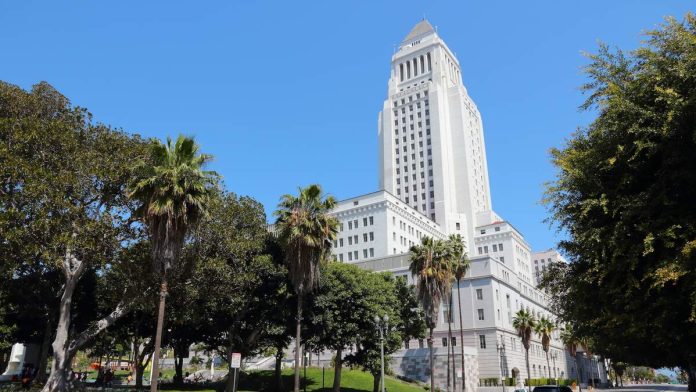LOS ANGELES (CNS) – Property owners in Los Angeles can expect a 22% sewer service rate hike starting in October, after the City Council approved new rates Tuesday, with smaller fee hikes planned through 2028.
In a 11-3 vote, council members gave final approval for an ordinance that will establish a new rate schedule for sewer services, which officials say is needed to maintain operations and improve aging infrastructure. To effectuate the new rates, the ordinance must also be approved by Mayor Karen Bass.
Prior to this proposal, the city had not raised sewer rates since 2020 due to the impacts of the coronavirus pandemic on Los Angeles residents.
Council members Monica Rodriguez, Kevin de León and Heather Hutt voted against the rate increase because they were concerned about the financial impact it would have on property owners and businesses.
“I want to underscore how much we support the continued investment in repairing our infrastructure, and that has been reflected even from the federal level, where they’ve been making substantial investments in our infrastructure,” Rodriguez said.
“We need to look to prioritize those investments so that we can shore it up and not continue to have taxpayers bear the brunt of what we are proposing here — a 22% increase that people are going to start seeing overnight.”
Rodriguez also expressed her frustration with the city’s lackluster communication to inform residents about rate increases. The councilwoman said she introduced a motion to modernize the city’s Prop 218 process, so that it isn’t “reliant upon our newsletters and our individual communications to our constituents.”
To implement the rate change, the city must comply with Proposition 218, also known as the Right to Vote on Taxes Act. This measure protects taxpayers by restricting how local governments can create or increase taxes, fees and charges without taxpayer consent. The city is required to notify property owners and adhere to public hearing and protest requirements.
According to the city clerk, there were 7,864 written protests filed, or just 1%, of more than 786,311 affected parcels that were mailed notices and forms.
“…I’m really concerned that we won’t fully be able to accomplish the amount of work based on the assessment that we are conducting here on this issue,” Rodriguez added.
Councilwoman Traci Park, who supported the rate increase, echoed Rodriguez’ concerns but focused on the benefits the rate increase could have for the city’s coastline and waterways.
“I personally see the catastrophic consequences of our failing infrastructure — sewer discharges, closing our beaches, sick and dying animals, piles of garbage up and down our coastline,” Park said. “It’s disgusting really, and shameful that we ever let it get this bad.”
Council President Paul Krekorian emphasized that there are a few things that the city has to come to grips with and must do — one of them is maintaining a functional sewer system.
“I would say this has not been an expedited or rushed process,” Krekorian said. “This has been a delayed process. We should have been making these investments years ago to prevent sinkholes from developing in our streets, to prevent the discharge of sewage into our oceans, and to keep people safe in the city of Los Angeles.”
In May, Los Angeles Environment & Sanitation, the bureau that oversees the city’s sewer system, proposed new rates.
Under the rate change, households will receive a 22% increase in sewage service fees in October, followed by smaller percentage increases through July 2028. Ratepayers would end up spending almost double compared to the existing fees.
A single-family household currently pays $75.40, but if the rate schedule is approved, it would see a charge of $92.04 on their typical bimonthly bill. By July 2028, the charge would be $155.48, though rates are based on a percentage of the amount of water used, according to the city’s sanitation bureau.
As of the 2024-25 fiscal year, nearly one-third of pipes are older than 90 years, past their life cycle of 60 to 80 years, while treatment plants have an expected average life cycle of 30 to 50 years, Barbara Romero, general manager of the sanitation bureau, wrote in a report to the City Council on May 2.
Romero also noted that over the next five years, there will be hundreds of infrastructure projects — estimated to cost more than $3 billion — including pipeline rehabilitation, water reclamation plants and water quality monitoring.

Recent Comments